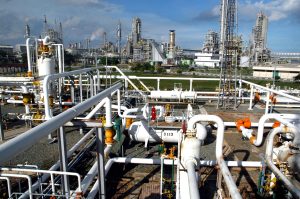Natural gas has long been one of Indonesia’s primary energy sources. Gas is used to generate electricity and power industrial processes, while liquefied petroleum gas (LPG) is used by ordinary Indonesians as a cooking fuel. In 2023, gas contributed 16.28 percent to the country’s energy mix, ranking third after coal and oil, which accounted for 40.46 percent and 30.18 percent, respectively. While renewable energy, including hydro, solar, and wind, have gradually increased over the years, they still fell short of gas, comprising only 13.09 percent.
The global energy think-tank Ember recorded that natural gas contribution to Indonesia’s total electricity generation accounted for 17.7 percent last year with the total installed capacity increasing by 26 percent from 16.46 gigawatts (GW) in 2018 to 20.74 GW in 2023.
Given that Indonesia has pledged to achieve net-zero emissions by 2060 or sooner, the country has sought to accelerate renewable energy development, including transitioning away from its heavy reliance on coal as the primary energy source. The government also issued a moratorium on new coal power plant development in 2022.
To align with the government’s agenda, Indonesia’s state-owned electricity company, Perusahaan Listrik Negara (PLN), is currently formulating the revision of its Electricity Supply Business Procurement Plan for the 2025-2034 period. Although the plan’s official details are currently being finalized, the Ministry of State Owned Enterprises has announced that out of 71 GW of additional electricity capacity by 2034, around 70 percent will come from renewable energy sources, while gas contributed to 21 percent with 15 GW capacity. As a result, Indonesia will see a significant increase in gas-fired electricity generation as the country gradually phases out coal plants, leading to soaring demand for natural gas.
Gas has long been characterized as a “transition fuel” that can play a supporting role in the global energy transition from coal to renewable energy sources. Although natural gas is in fact a fossil fuel, the International Energy Agency found that carbon dioxide emissions per unit of energy produced from gas are 40 percent lower than coal and 20 percent lower than oil. The United Nations Environment Programme also showed that natural gas is a cleaner fuel that produces fewer air pollutants, such as sulfur dioxide and particulates, than coal or oil.
In terms of affordability, natural gas remains competitive, although it is not the cheapest option compared to other renewable energy sources. According to the Institute for Essential Services Reform, the average cost of generating power at gas-fired power plants is $0.1078 per kWh for Open Cycle Gas Turbines and $0.0774 per kWh for Combined Cycle Gas Turbines. In comparison, coal power plants are typically cheaper at $0.0568 per kWh, while geothermal, hydro, and gas-fired power plants range from $0.0650 to $0.0774 per kWh. Nonetheless, the initial capital expenditure required to build gas-fired power plants is the second cheapest after coal, at $0.0248 per kWh, slightly higher than that of coal power plants, which cost $0.0242 per kWh.
Lower carbon emissions and lower upfront capital costs for building gas-fired power plants are key reasons why Indonesia and other developing countries in Asia are boosting their gas capacity in order to meet growing energy demand. The Global Energy Monitor reported that Indonesia, along with its Southeast Asian peers, such as Vietnam, the Philippines, Malaysia, and Thailand, is expanding gas power capacity to over 100 GW collectively, although it did not mention a timeframe.
However, given that President Prabowo Subianto has pledged to achieve energy self-sufficiency, the government may soon face a reality check in the energy landscape, particularly in the natural gas sector.
Despite the expected increase in demand for natural gas, driven by the additional development of up to 5.8 GW of gas-fired power generation capacity by 2030, the country’s natural gas production has decreased in recent years.
Data from the Ministry of Energy and Natural Resources shows that domestic natural gas production declined by over 16 percent between 2016 and 2023, from 1.40 million barrels of oil equivalent per day in 2016 to 1.17 million in 2023. This is also reflected in the nation’s annual utilization of natural gas, which has declined from 6,856.66 BBTUD in 2016 to 5,868.53 BBTUD in 2023.
Accordingly, Indonesia’s gas imports have risen over the same period, from 4.43 million tons to 6.93 million tons. The APEC Energy Demand & Supply Outlook report projects that Indonesia is on the path of becoming a net gas importer by the mid-2030s, as domestic production becomes insufficient to meet rising domestic demand.
Apart from the imbalance between domestic natural gas production and consumption figures, another challenge the government faces is to navigate the country’s gas supply for both electricity generation and industrial utilization. Natural gas use for electricity has declined from 1,010.96 BBTUD in 2016 to 693.68 in 2023. At the same time, gas utilization for industry has increased from 1,474.81 BBTUD to 1,809.12.
The increase in gas consumption for industry is also driven by the “subsidy” policy through the Specific Natural Gas Price (HGBT) program, which caps the gas price at $6.5 per MMBTU for certain industries.
As Indonesia seeks to bolster its electricity capacity from gas sources amid growing domestic demand for gas consumption, the Prabowo administration needs to find ways to enhance the country’s natural gas lifting capacity. This approach would not only support industrial growth but also reinforce the energy security of the entire archipelago.
Outgoing President Joko Widodo and Finance Minister Sri Mulyani have cautioned that the low lifting capacity in Indonesia’s oil and gas sector is forcing the country to increase more imports, negatively impacting the nation’s fiscal health.
Improvements in the investment climate and regulatory framework are poised to boost natural gas production in Indonesia by attracting more participation from both state-owned enterprises and private sector players, including local and foreign investors. At the same time, however, it remains crucial to ensure that environmental protection and supervision are rigorously upheld.

































